All issues

Current issue
Displaying 1-9 of 9 articles from this issue
- |<
- <
- 1
- >
- >|
-
[in Japanese]1979Volume 63Issue 12 Pages 768-775
Published: December 25, 1979
Released on J-STAGE: July 19, 2011
JOURNAL FREE ACCESSDownload PDF (6056K) -
Minoru Tanaka1979Volume 63Issue 12 Pages 776-782
Published: December 25, 1979
Released on J-STAGE: July 19, 2011
JOURNAL FREE ACCESSDownload PDF (11100K) -
Determination of Reflective Radiance Factor in an Overlapping Spectral RangeHideyuki Minato, Motoi Nanjo, Yoshinobu Nayatani1979Volume 63Issue 12 Pages 783-791
Published: December 25, 1979
Released on J-STAGE: July 19, 2011
JOURNAL FREE ACCESSA fluorescent sample absorbs spectral radiations and emits its fluorescence radiation due to the excitation of fluorescent material by that absorbed. The fluorescence radiation is found in a spectral range louger than that of its absorption. This excitation and the emission of a fluorescent sample are usually found simultaneously in a rather wide spectral range. The existence of this overlapping region of a fluorescent sample makes it difficult to measure its reflective radiance factor in a two-monochro-mator method. This problem is solved by the following method.
(1) At a specified wavelength in the overlapping region, a total spectral radiance factor of a fluorescent sample is composed of a reflective and a fluorescent spectral radiance factor. The fluorescent spectral radiance factor at the wavelength is interpolated on the basis of a few measurements of spectral radiance of the fluorescent sample by changing the wavelength setting of an analyzing second monochromator. The reflective spectral radiance factor is estimated by subtructing the interpolated fluorescent spectral radiance factor from the corresponding total spectral radiance factor.
(2) The reflective spectral radiance factor in the overlapping region was measured for two kinds of fluorescent samples with an orange and a green color. The repeatability of measurements was estimaed to be better than ±0.4%. The effectiveness and the simplicity of the proposed method was confirmed based on the comparisons with other methods considered for the same purpose.
(3) Detailes of used measuring system are also reported.View full abstractDownload PDF (1323K) -
Kenichi Kimura, Masanori Shukuya, Masahiko Tokunaga, Tadahiko Hashimot ...1979Volume 63Issue 12 Pages 792-796
Published: December 25, 1979
Released on J-STAGE: July 19, 2011
JOURNAL FREE ACCESSThe relationship between daylight illumination and solar radiation on horizontal surface was examined from the five months' data measured on the roof of 18 storied building in Tokyo for the purpose of evaluating the energy effect of daylight illumination including direct sunlight. Average values of dalight illumination and solar radiation were obtained from measurements recorded as 30 minutes' integrated values for different weather conditions. Then the luminous efficacy of daylight was obtained for direct and diffuse components as well as total amount on non-dimensional basis derived from the measured values divided by the extraterrestrial value. It was found that the luminous efficacy of daylight became larger for higher solar altitude and amounted to around 115 lm/W. The luminous efficacy of diffuse component of daylight was found to have nothing to do with the solar intensity itself and about 10lm/W higher than that of direct component, which increased as the weather was finer.View full abstractDownload PDF (2257K) -
Taturo Sasaki1979Volume 63Issue 12 Pages 797-806
Published: December 25, 1979
Released on J-STAGE: July 19, 2011
JOURNAL FREE ACCESSA short-arc xenon lamp has a region in which the arc and the radiant flux become unstable since an acoustic resonance ocures at the specific frequencies of the lamp when current modulation is employed. Therefore, when this kind of lamp is used as a modulated light source by modulating it directly, it is recommended that it should be used below the frequencies at which the lamp becomes unstable.... “usable frequency band.”
In addition, the fundamental features of the short-arc xenon lamp as a modulated light source, such as signal transfer characteristics and light modulation characteristics, have not been clarified.
This paper discusses the relationship between the fundamental features of the lamp (form of lamp bulb, electrode spacing, gas pressure and input wattage) and the modulated operation characteristics (instability of radiant flux, usable frequency band, signal transfer characteristics and light modulation cut-off frequency).
The following formula was drawn from the result of this work: the lowest acoustical resonant frequency of the current modulated short-arc xenon lamp is given by
far=0.88×104/D(1+0.76(W/Or)0.38)0.5HZ
Where D is the inside diameter in cm, W is the lamp input wattage in nonmodulated operation in watt, Or=As/δ, where As is the surface area of the bulb in cm2, and δ is thickness of the bulb wall in mm.
Moreover, in the usable frequency band, the short-arc xenon lamp can be regarded as a signal transfer system of the first order time lag.View full abstractDownload PDF (1412K) -
Shigeru Okada, Tadahiro Kaneko1979Volume 63Issue 12 Pages 807-810
Published: December 25, 1979
Released on J-STAGE: July 19, 2011
JOURNAL FREE ACCESSDownload PDF (3317K) -
Jürgen Wegner, Hiroshi Nakamura, Masato Oki1979Volume 63Issue 12 Pages 811-816
Published: December 25, 1979
Released on J-STAGE: July 19, 2011
JOURNAL FREE ACCESSDownload PDF (3578K) -
[in Japanese], [in Japanese], [in Japanese]1979Volume 63Issue 12 Pages 817-818
Published: December 25, 1979
Released on J-STAGE: July 19, 2011
JOURNAL FREE ACCESSDownload PDF (1762K) -
1979Volume 63Issue 12 Pages plate1-plate8
Published: December 25, 1979
Released on J-STAGE: July 19, 2011
JOURNAL FREE ACCESSDownload PDF (9359K)
- |<
- <
- 1
- >
- >|